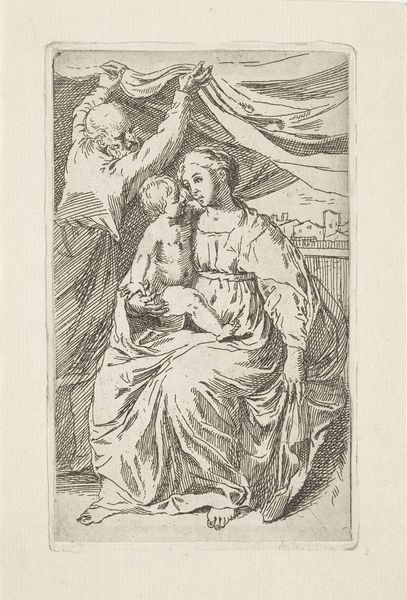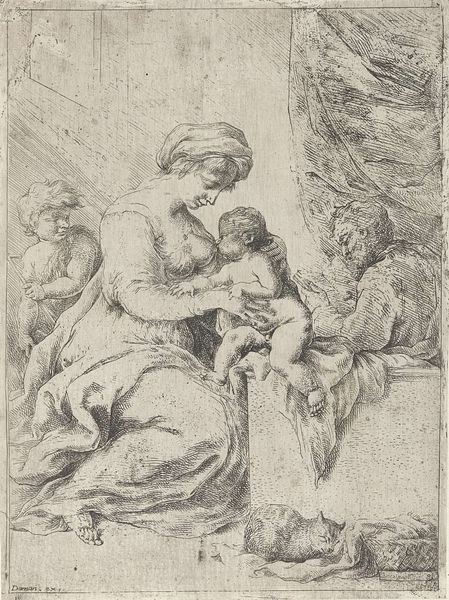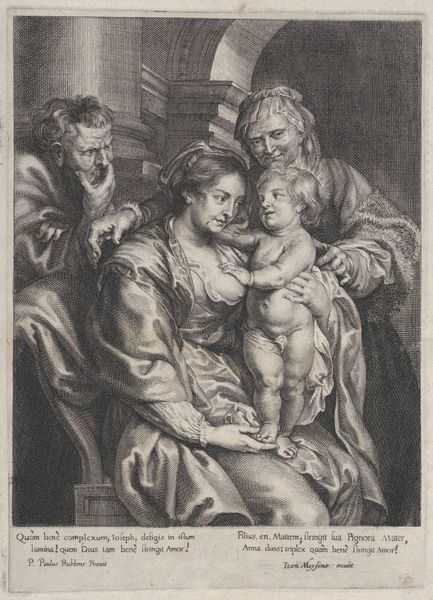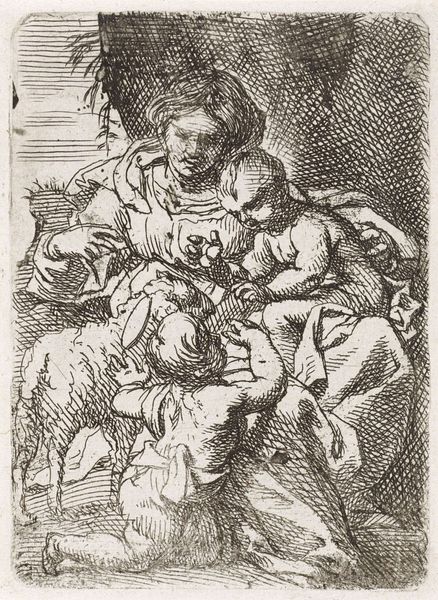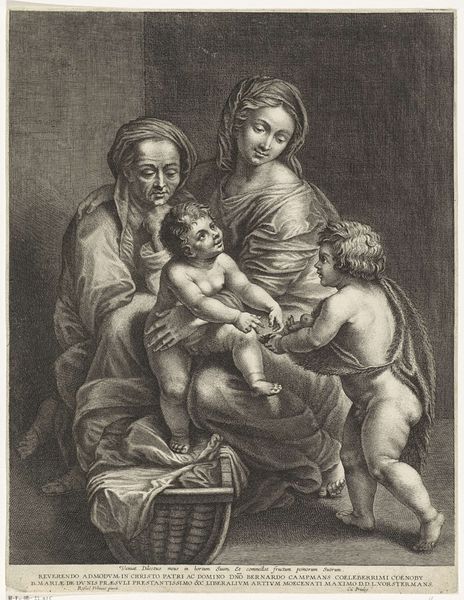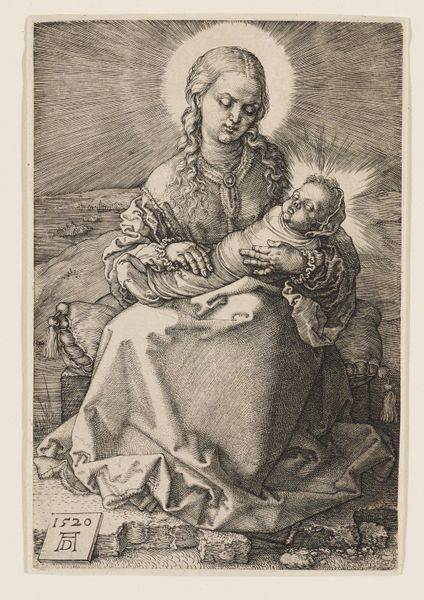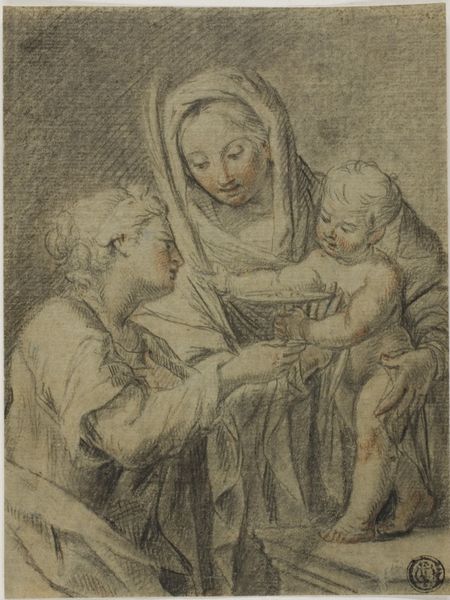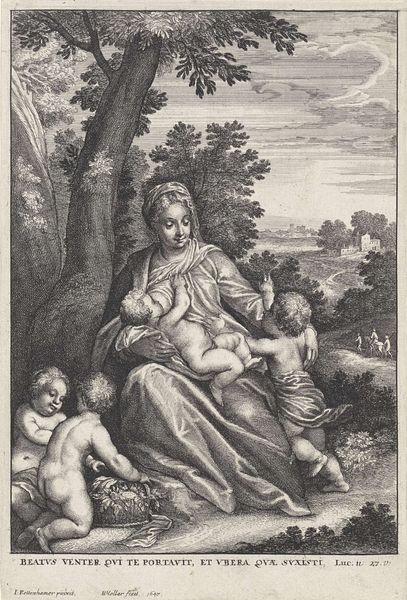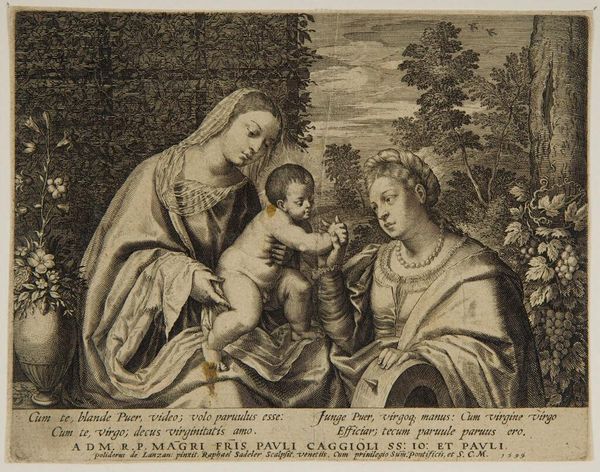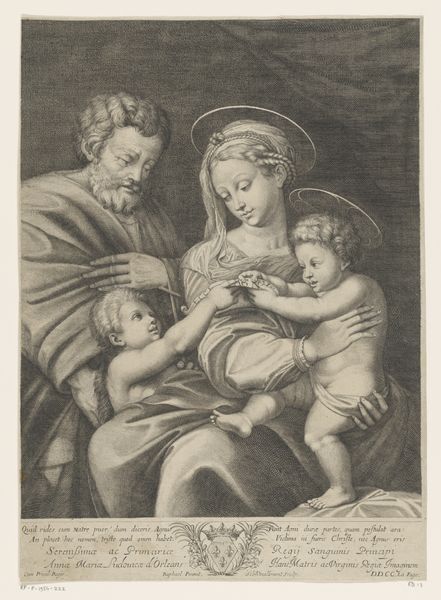
print, intaglio, engraving
#
portrait
# print
#
intaglio
#
old engraving style
#
figuration
#
portrait reference
#
portrait drawing
#
history-painting
#
italian-renaissance
#
engraving
Dimensions: height 208 mm, width 182 mm
Copyright: Rijks Museum: Open Domain
Curator: Let’s pause here for a moment to appreciate "The Mystic Marriage of Saint Catherine" by Bernardino Capitelli, created sometime between 1599 and 1640. It's an engraving, meticulously rendered. What strikes you initially? Editor: It feels like a dance in shades of grey—intimate yet strangely formal. The starkness almost makes you feel like you're witnessing a dream, slightly removed and untouchable. Curator: Absolutely. Now, thinking about it as an engraving, consider the process. Each line, each area of shading had to be etched painstakingly onto the metal plate. That plate would then be inked and pressed, imprinting this image repeatedly. Think about the labour, the meticulous skill involved, the artist's vision translated through repetitive, almost industrial processes. It bridges craft and reproduction in such an intriguing way, doesn't it? Editor: It does. And speaking of bridging, there's a compelling contrast here between the spiritual subject matter and the distinctly physical act of creation. We have Saint Catherine's mystical union, a divine event rendered through the sweat and skill of an artisan shaping metal and ink. It’s an act of faith expressed through intensely material means. Curator: Exactly! I'm also captivated by the historical layers – a religious scene portrayed with such Renaissance sensibilities. The lines evoke something so classical while the figures hint at divine and human connection, each stroke of the engraving needle almost singing the quiet song of devotion. Editor: I hadn’t thought of it quite that way, but it makes sense. To see this reproduced repeatedly shifts the lens on that "mystical" aspect. The print’s circulation in society, and its eventual integration into people's lives – what’s more powerful, the supposed marriage to Christ or the tangible ownership of this religious subject by everyday folks? Curator: Food for thought indeed! It is about distribution too—an opportunity for wide dissemination and interaction between social classes that other types of artwork did not afford. I feel that’s part of its intrinsic value. Editor: Ultimately, both—the artistic creation and its reach—feed each other, constructing and disseminating religious knowledge across geographical and economic divides. It certainly transforms our sense of the artist, the art, and how knowledge really operates. Curator: So, taking a moment to depart now, this journey into "The Mystic Marriage," meticulously crafted in ink, shows not just skilled production but a window onto beliefs and how images circulated in Renaissance society. Editor: And how something made with very tangible, earthly labor attempts to capture what’s deemed transcendent, almost mocking our concepts of what separates “high” art from everything else.
Comments
No comments
Be the first to comment and join the conversation on the ultimate creative platform.


